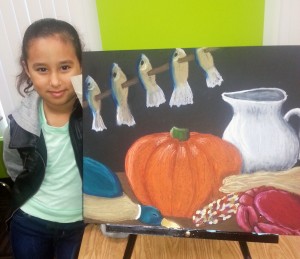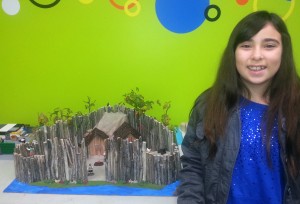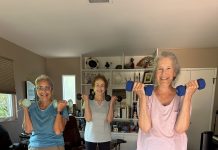 If grades weren’t a part of the equation, would kids still try their best? Stay motivated? Complete assignments? Engage in class discussions?
If grades weren’t a part of the equation, would kids still try their best? Stay motivated? Complete assignments? Engage in class discussions?
Is it possible for children to find joy in learning for learning’s sake?
I say yes, yes, yes, yes, and a resounding yes.
About a year ago, I felt the old tug in the teacher part of my heart to once again return to the classroom. I set my sights on the Homeschool Campus of OC because of my decades-long interest in alternative forms of education and because I could teach part time.
At the Homeschool Campus, a variety of classes are offered on Mondays and Wednesdays only. Among them: Art History, Chess, Science, Theater, Math, Spanish, and Cooking.
All the teachers there are independent contractors who rent classroom space. I was thrilled to be added to the roster.
In addition to teaching two creative writing classes, I’m fulfilling a dream of teaching a U.S. History class. I spent last spring and summer developing my own curriculum where we “use all five senses to make the past come to life.”
If you think all homeschoolers are part of some kind of religious cult who make matching floor length dresses, think again. Homeschool kids are cool. And while some can sew I suppose, the kids I teach play multiple instruments, participate in team sports, travel, do volunteer work, and have close-knit families. Contrary to popular misconceptions, these kids also have a thriving social life.
the kids I teach play multiple instruments, participate in team sports, travel, do volunteer work, and have close-knit families. Contrary to popular misconceptions, these kids also have a thriving social life.
This past week, the historians presented their first of several passion projects of the year. They exuded a pride of ownership that only comes with doing something that requires great effort. They each displayed a deep understanding of their chosen topic, demonstrated critical thinking, and applied knowledge by explaining concepts to their peers in their own words.
The kids’ presentations affirmed for me that the elementary years should be used to capitalize on a child’s precious and natural resources: curiosity, openness, and creativity.
It would have been foolish to attach something so flimsy, so meaningless as a letter, to Kai’s model of Plymouth Plantation, complete with an Indian village and pilgrim homes, crops of vegetables, and a blue cellophane sea upon which his hand painted Mayflower sat.
How could I quantify Joey’s Lego building skills he used to create Jamestown?
Nathan made a clay animation video about the journey of the Mayflower and the establishment of Plymouth, hand crafting each piece and narrating the movie. An A would have been insulting, reducing everything I wanted to share with Nathan not just into a sentence or a word, but a mere letter? Unthinkable.
Malia’s acrylic painting of Christopher Columbus and her model of the Santa Maria made from aluminum foil, coffee stirrer masts, and paper towel sails captivated the class.
Gabriella baked 17th century Indian corn bread and brought enough for everyone to try.
Megan used oil pastels to draw a still life of the foods at the first Thanksgiving, including crab, deer, and fish.
Noah shared his detailed pencil drawing of the Mayflower and read a first person account he wrote imagining himself on the Mayflower. Here’s an excerpt:
“We sit quietly on the lower deck; cold wet, and scared. Crammed in together, in a small space we are forced to share. It smells so bad from the buckets of toileting to others getting sick, I close my eyes and pray that this trip will be over quick.”
Not one of my nineteen second-fifth grade historians asked me what grade they got on their project. They were too busy learning.




